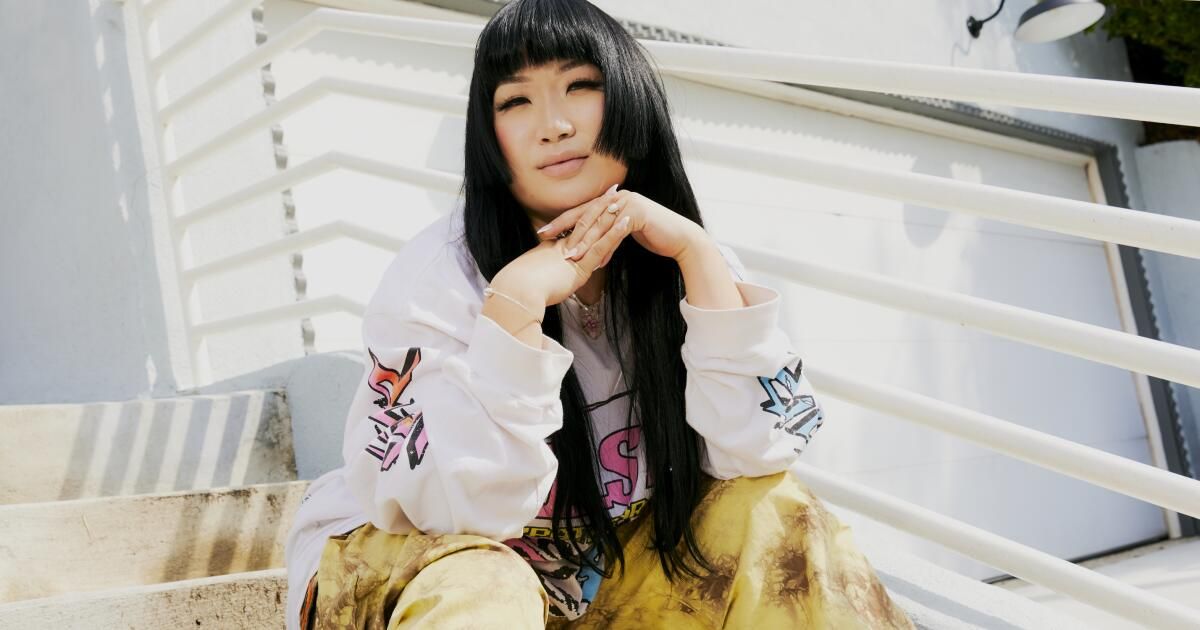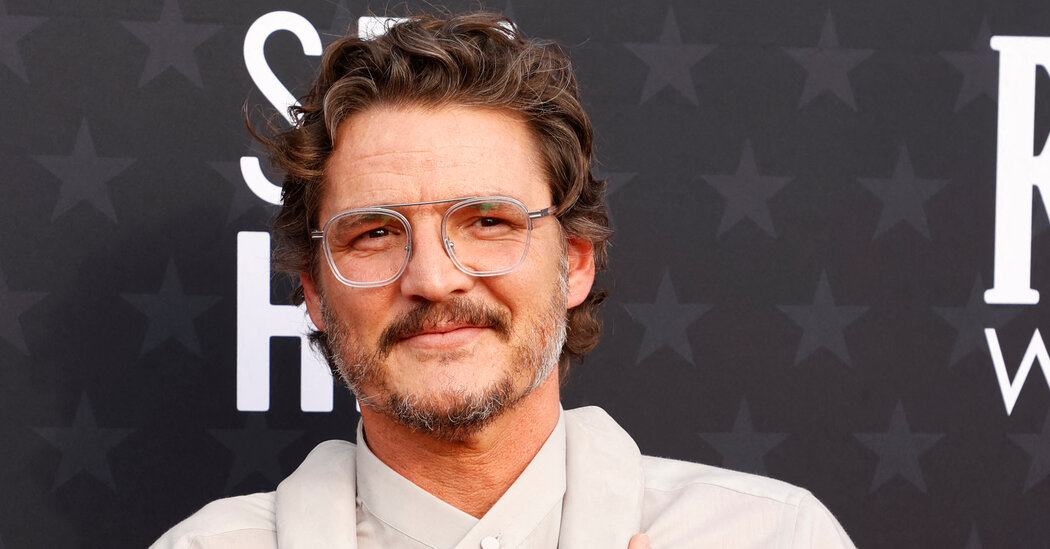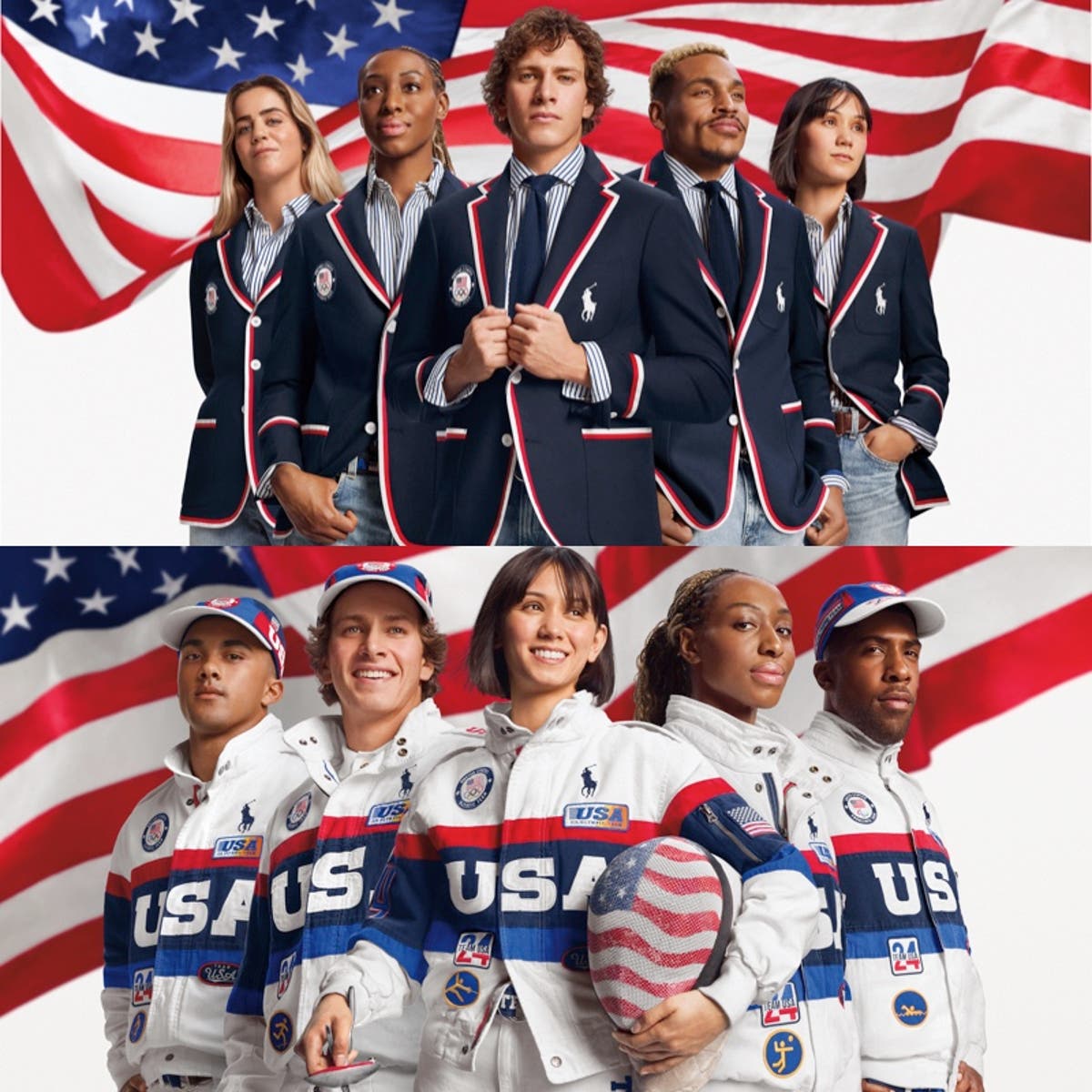Jess is wearing a Hellstar shirt, Brain Dead pants, Prada shoes, and a Heaven by Marc Jacobs bag.
(Jennelle Fong / For the Times)
Wearing a knitted soccer jersey and a knowing smile, Jess Mori offers a lemon to the camera. The backyard of his Silver Lake residence faces a quiet east side on a Friday afternoon. At this point, you can hear nothing but birds and SZA playing through the portable speaker on the grass. Mori breaks his pose to grab another lemon, which he insists on. it really smells. The photo shoot is wrapped in a fragrance as sweet and serious as Mori herself, who immediately captures Los Angeles' love of the high and low (aesthetically and geographically) even though she has just arrived.
Originally from Vancouver, Mori's recent landing in Los Angeles is a new beginning in a career that has seen many lives. She recounts her experiences as a fashion illustrator, designer, creative writer and editor. “There was a funny girl who worked in this cafe for the advertising agency I worked for. Every time she came in, she said, 'Do a lap for me! Let me see your outfit!' She even went so far as to say: 'I don't work in fashion!' But in an office space she does stand out if you are wearing something remotely interesting.” Mori eventually took these encounters as a sign to quit her job and pursue her first love, moving to New York to climb the proverbial ladder by interning and assisting stylists. Fast forward: Mori's roster now includes Simu Liu, Sean Paul, Salem Mitchell, Savannah Ré, Nike and Adidas, to name a few.
Like the knitted sweater you wear, Mori's thesis is about placing the familiar in an unfamiliar context and seeing what happens. She describes her style philosophy as always having “an element of awkwardness.” Otherwise, she explains, “you're doing something super, super safe. It is neither good nor bad. And I think that's the worst thing it can be: that no one has anything to say about it. I'll take polar opposites versus nothing. Neutral is the worst.”
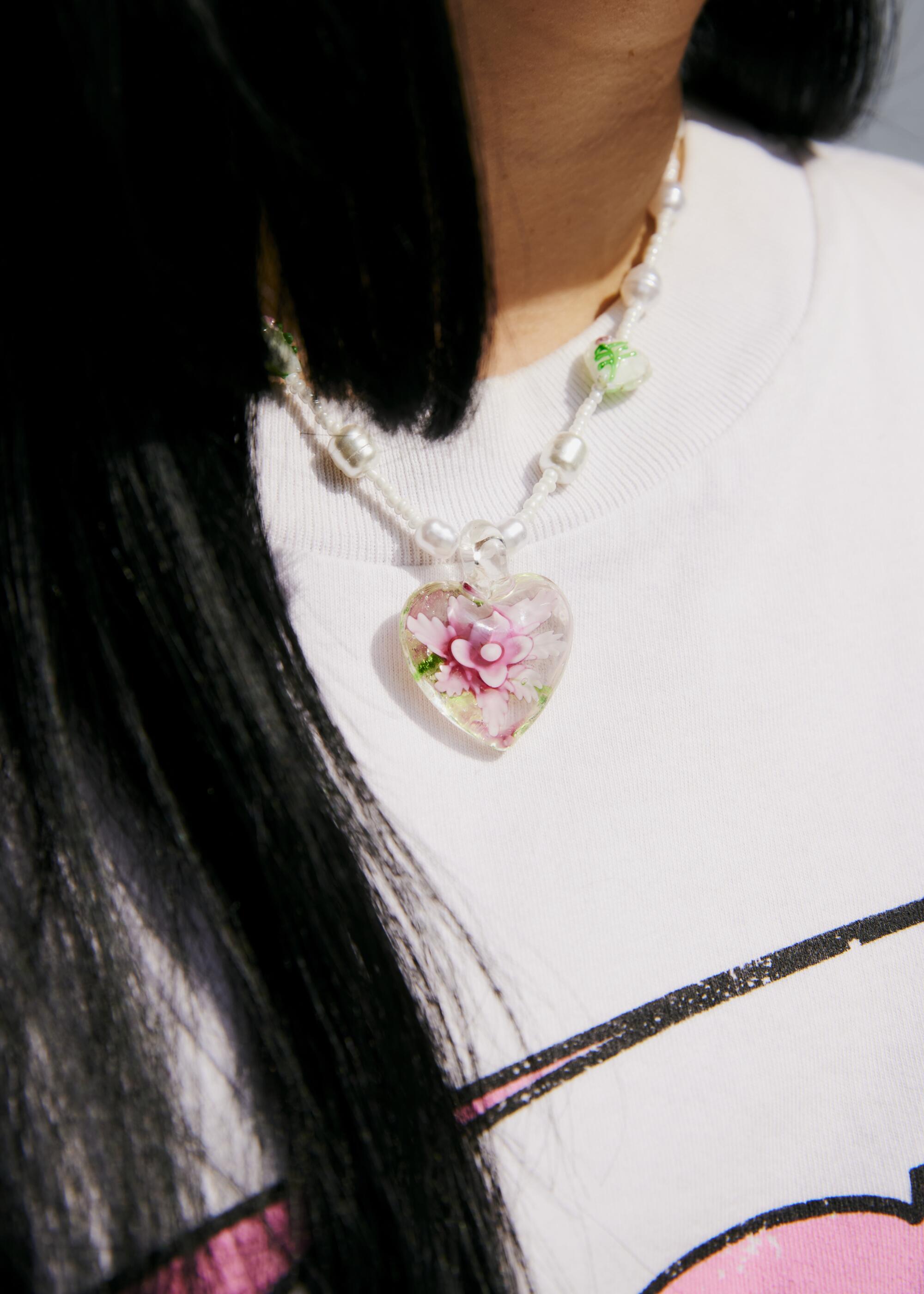
Mori is about placing the familiar in an unfamiliar context and seeing what happens.
(Jennelle Fong/For the Times)
Alyson Zetta Williams: What is the first thing you address when styling yourself and others?
Jess Mori: When it comes to my own fashion, I like things that catch my eye as statement pieces. I like things to have several lives in my closet. So even if it has standout quality, I just want to be so inspired by the piece that I can reinterpret it in multiple ways. It should be comfortable because, and probably all stylists say this, we are always on the move. You're never set on temperature, you're always hot, you're always lifting things, so it's important to layer.
I truly believe that everyone has a certain DNA in terms of their personality and how they dress. I see everyone's personality on a spectrum. And it's exciting how far we can push that scale to the right or to the left. We always talk about the resting bitch face. But it's like, what's your break? style? What is zero on the scale? So how do we raise or lower it?
AZW: You just moved to Los Angeles from Vancouver about a month ago. Are there any immediate or unexpected sources of inspiration you've found since moving here?
JM: I love the idea that Los Angeles is a huge city, but that you are always connected to nature. There are so many plants and places to walk, hike and escape. In Los Angeles you already have the best setting for whatever you're doing and it's inspiring to see all the different cultures and neighborhoods. This is the first time I see a Thai city or a Filipino city. I like how all of these neighborhoods have their own distinctive style culture. I love that you can find so many sources of inspiration in one place.
Everyone around you is always doing something, always hustling. In order to truly live this lifestyle, it helps to have other people doing it by your side so you don't give up every time you feel like it. That's probably the most inspiring thing about Los Angeles: that you never feel like you're doing it alone.
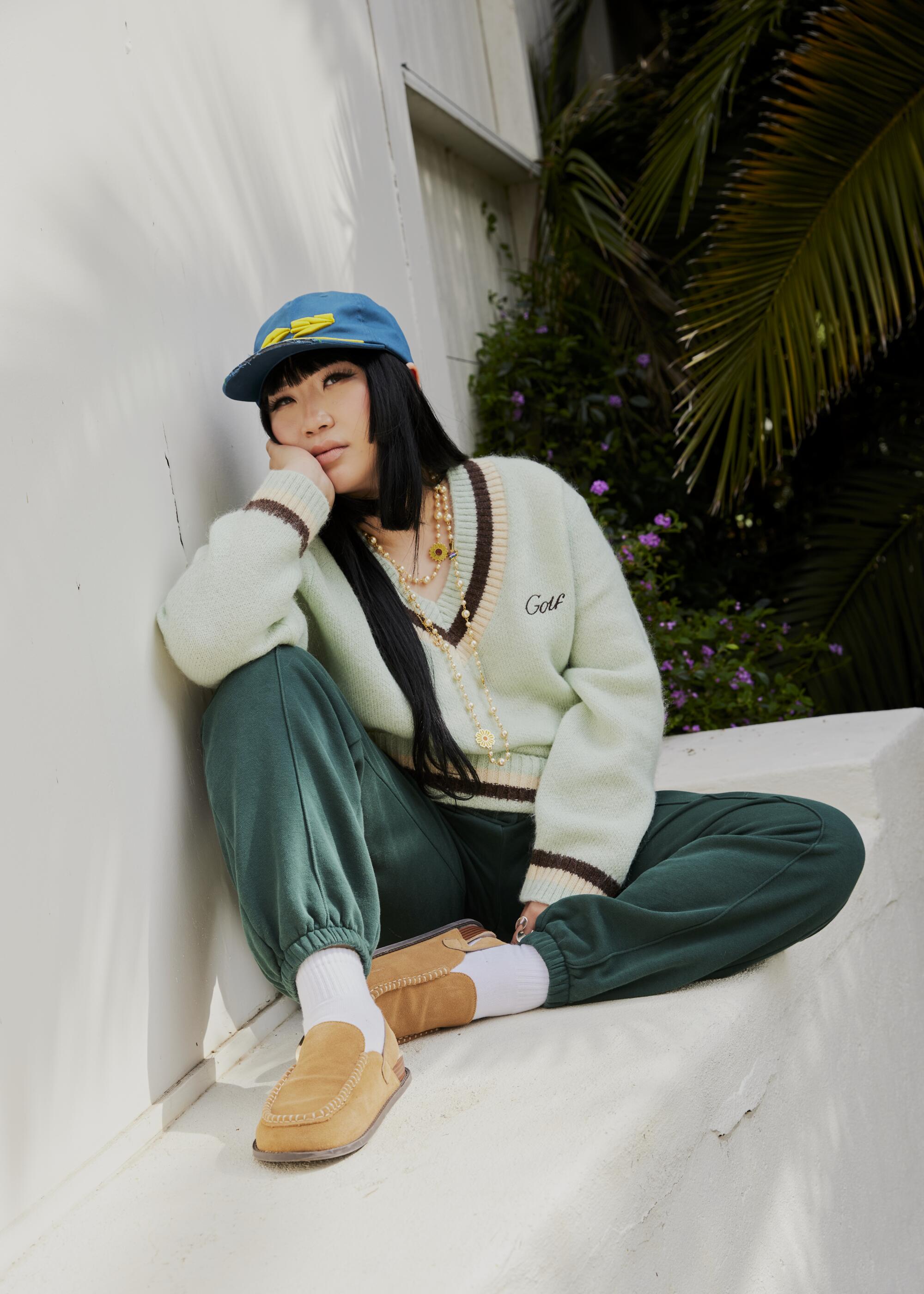
Jess wears a Golf Wang sweater, Nike pants, a Stugazi necklace, an ANY7 cap, and Zara shoes.
(Jennelle Fong/For the Times)
AZW: In your work, there is a recurring juxtaposition between athletic utility and spontaneous glamour, often within the same look. Is your work more focused on creating sporty glamor or turning glamor into something sporty?
JM: I've always had this strange relationship with gender when it comes to traditional clothing. I really struggle with some designers who, for example, don't allow you to request male looks for a female talent. I just don't understand it, because a lot of it is fluid. I mean, right now I'm wearing a sweater from the men's collection.
I also like to push the boundaries of what haute couture is, what luxury is, what it means to be elegant. If you tell me something has to look elegant, does it always have to mean wearing a dress? When I'm styling, I pull out all these rules about what it means to be elevated because I think you can do anything elevated. You can turn anything into a red carpet vibe.
I don't like the term “street clothes.” But I like to drink [streetwear] and combining it with high fashion brands and materials. I just like the clash. And that's when I feel happiest: when things argue with each other.
AZW: I've never heard anyone say they don't like the term “streetwear.”
JM: I was having this conversation with an Uber driver the other day, because he was telling me that he designs bomber jackets. And he said, “Oh, I only do urban things though.” And I said, “Well, don't describe your stuff that way, because they'll try to pigeonhole you.” But what is urban? Urban is moving culture, urban is at the forefront of many fashions and is on the runways of Marc Jacobs and Louis Vuitton. All of these people use streetwear in most of their collections. It's about eliminating that stigma of “Oh, it's just urban” or “It's just street clothes, it's just sportswear,” because everyone can coexist.
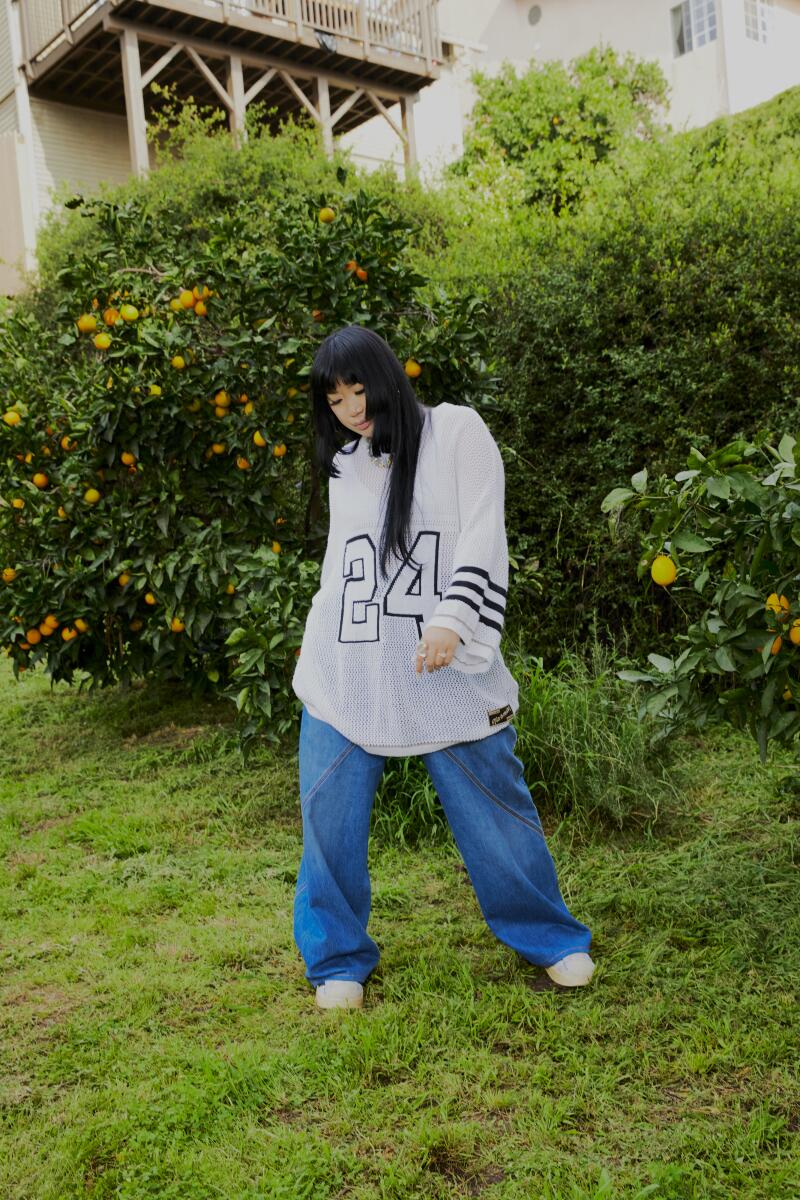
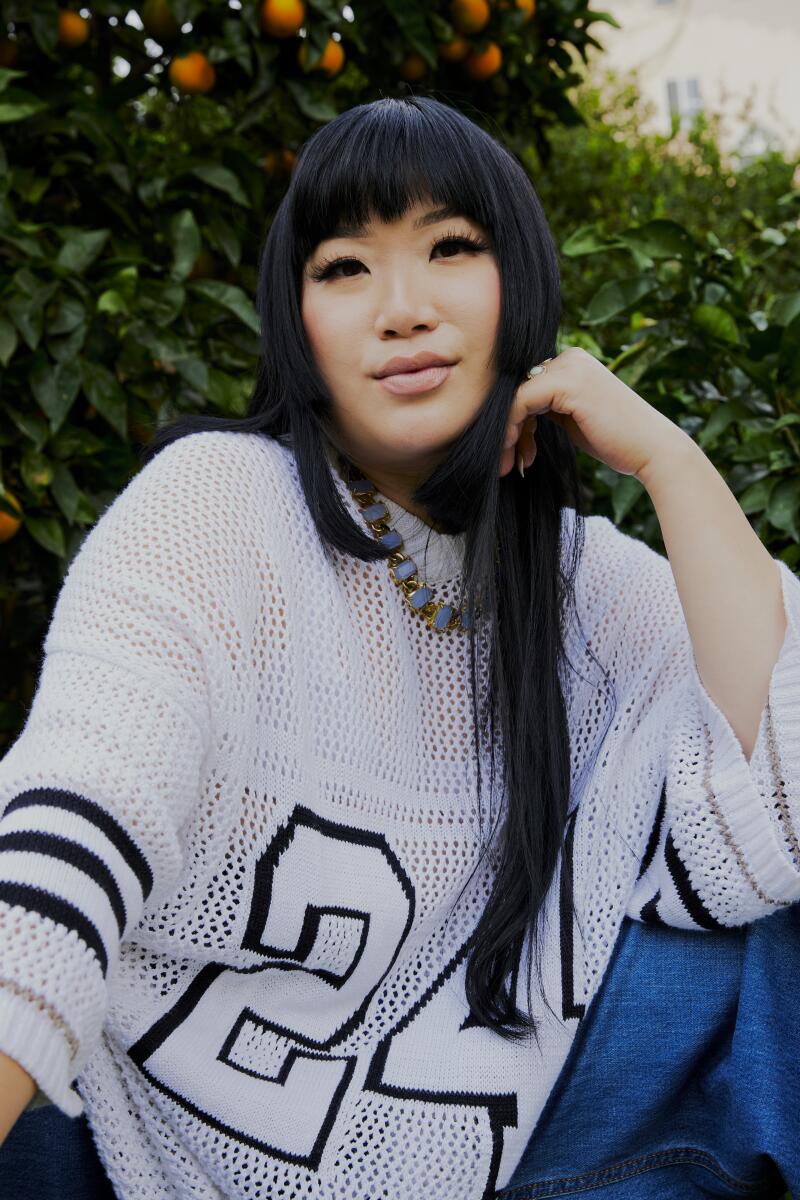
Jess wears a Nahmias sweater, JW Anderson pants, Adidas shoes, and a Vitaly necklace.

Jess is wearing an Urban Renewal sweater, a 1/OFF Paris top, a Re/Done skirt, and Nike shoes.
(Jennelle Fong/For the Times)
AZW: As we approach spring, how is your relationship with these concepts of utility and glamor changing?
JM: Spring is a great season to explore color. I love the uniform dress code, where you have your key pieces as talking points, conversation starters. Spring is so unpredictable. You never know how many rainy or sunny days you will have. I think it's always good to dress in layers and have unexpected pieces, but combine them with your basic uniform, which could be something like a nice jacket and some well-fitted jeans.
Spring and fall, I love those two seasons because you have more to play with. Summers are very limiting because you are really restricted to whatever lightest layer of your body. But spring is the best time to play and really collide, bringing different things together. How to combine a cotton knit cardigan with a lighter skirt. It is a time when juxtapositions are the way to go.
AZW: In a Jess Mori world, what would spring style look like?
JM: As you may have deduced from this interview, I am very contradictory in all my decisions. I just want to see people playing with color more. I just got back from New York and I saw a lot of black everywhere.
Los Angeles has so many vintage and handmade things that I think if you're trying to create something unique to yourself, there's nothing better than going to thrift stores and finding something that you know you'll be the only one to wear. Spring is a good time to look for special pieces.
Right now I love football shirts and knitwear. I would love to see more granny knits become mainstream, like what Sandy Liang did. I love seeing people play with ties and then wear a utility work pant, or the juxtaposition of someone wearing a hoodie and a mini skirt.
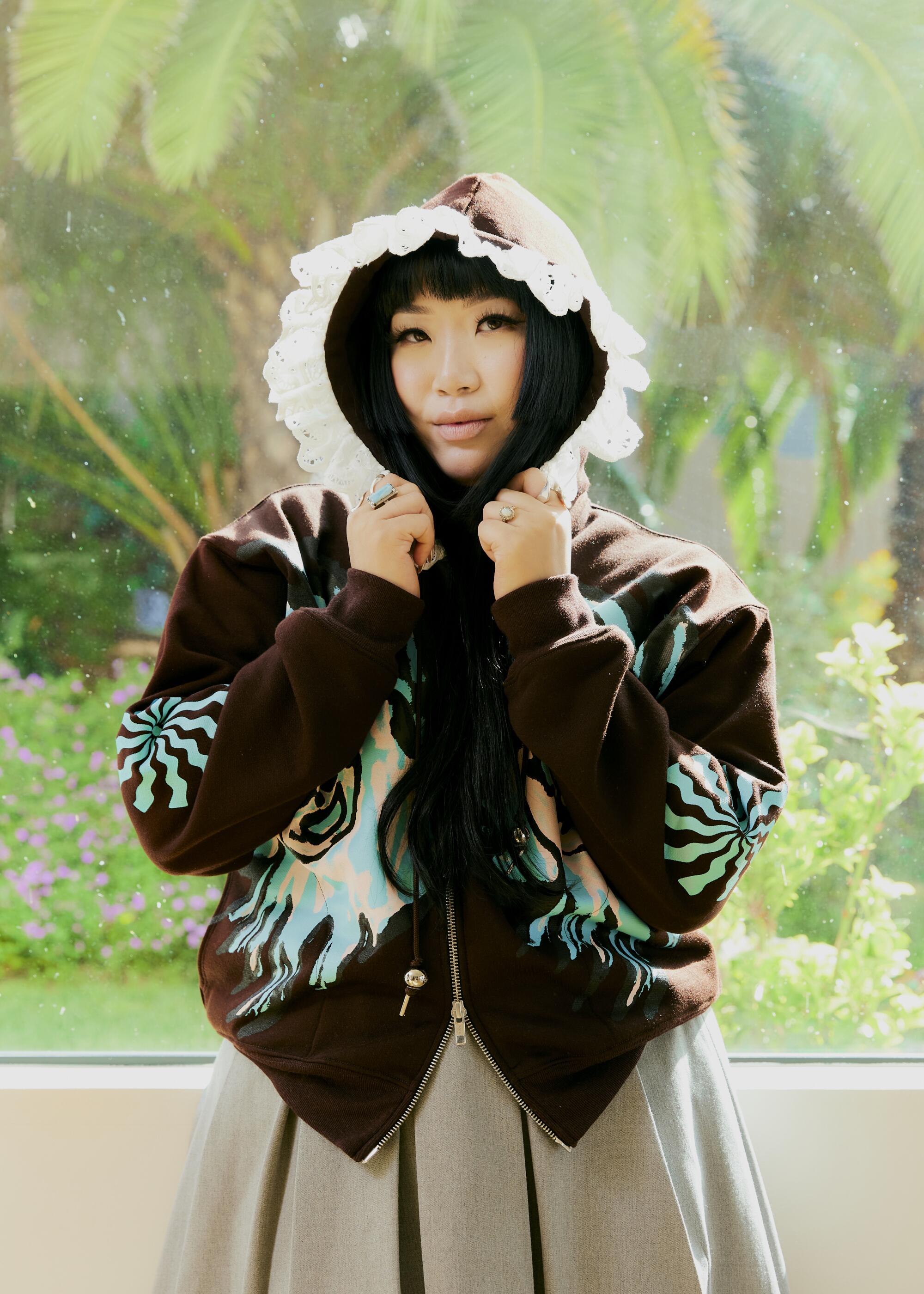
Jess is wearing Chopova Lowena hoodie, Zara skirt and Adidas shoes.
(Jennelle Fong/For the Times)
AZW: When you style yourself, where do you add those utilitarian and/or glamorous elements?
JM: Shoes and jewelry are usually where I express the most glamour. I'll probably spend more on jewelry and shoes.
And then the utility… I've never owned more than two pairs of jeans at a time. I don't love tight pants. So once I find a good jean, I either buy a size larger and then have it tailored for the correct size, or vice versa. I find usefulness in jackets, which are always good pieces to combine. Utility is very often found in my bags. Prada's nylon collection is the best because it cannot be stained. I always have to have a huge bag. So I'm never too far away from a huge tote bag with an organizer inside. I have a Gucci backpack with the perfect pocket for receipts. I can't make those little Polly Pocket bags that people carry around. I found the best $30 crossbody bag and bought three of them, one of each color because they were great for sets or just everyday life. They have like 42 pockets everywhere. Pockets are always a useful trick.
I love using my Korean and Japanese heritage as a backdrop. Naturally, I am attracted to silhouettes like Yohji Yamamoto, Sandy Liang or Andersson Bell. They talk about what we were talking about before fluently, these designers are fluid with their forms. This way you will never feel too feminine or masculine. It's a really nice balance between both worlds.
Alyson Zetta Williams is a Los Angeles-based writer whose work has appeared in iD, NYLON, Office Magazine, Rookie Mag, and more. Her substack is Sorry4444.substack.com.

